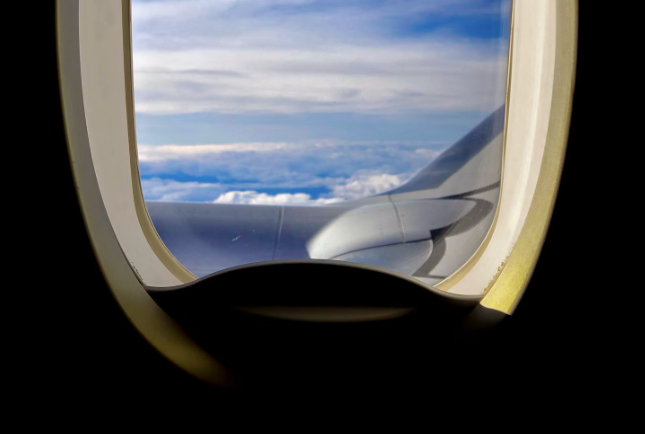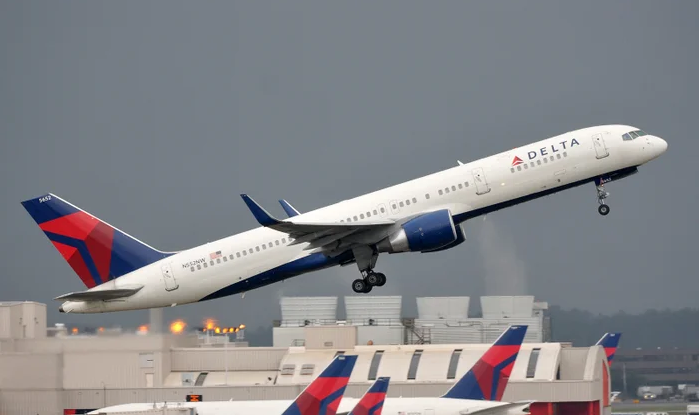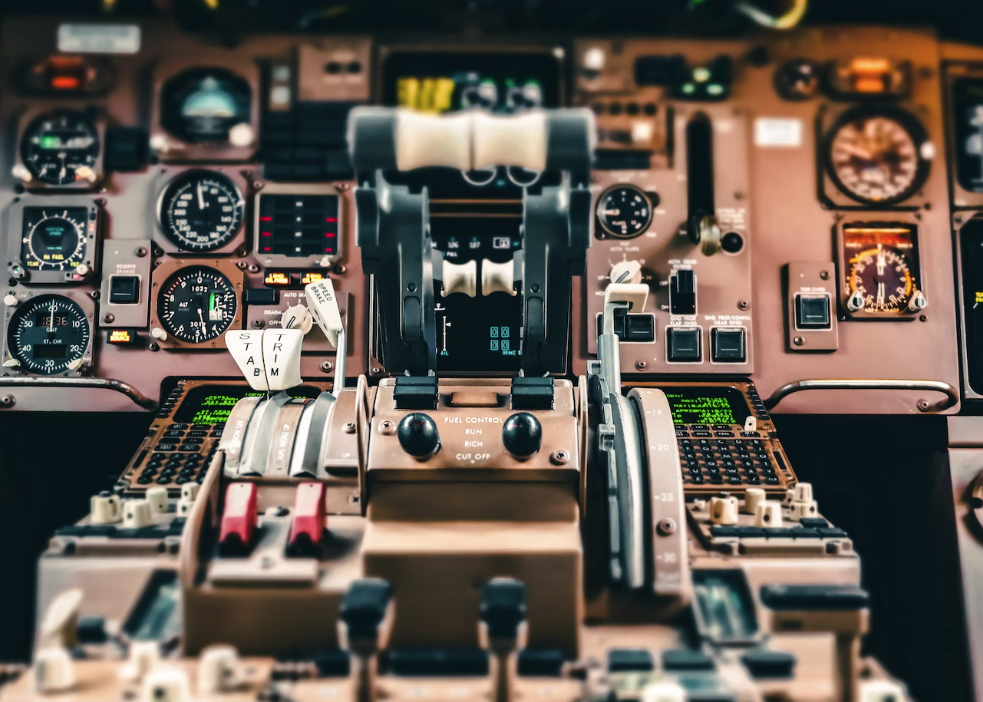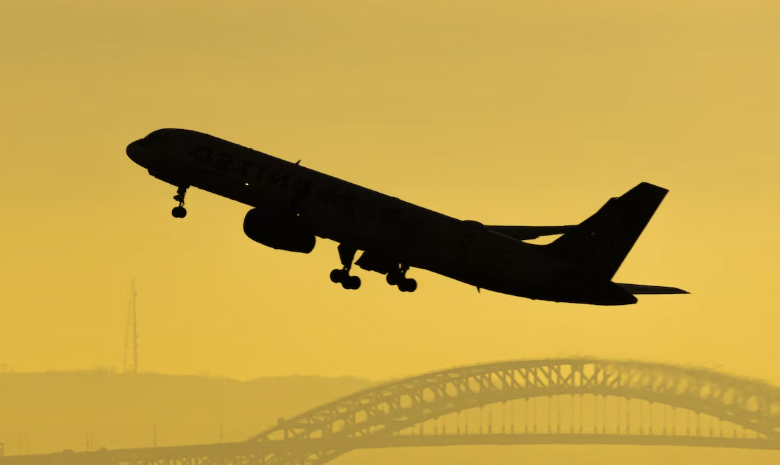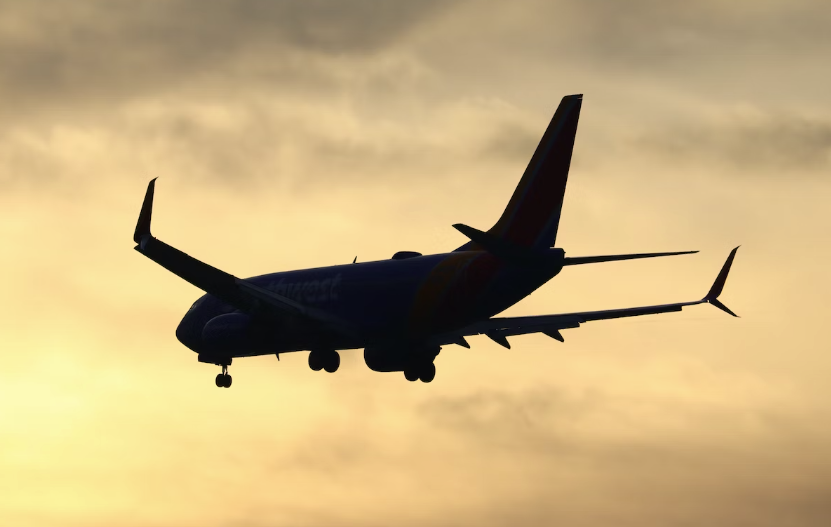UPDATE: November 19, 2020
Two years after the crashes of Lion Air flight 510 and Ethiopian Airlines flight 302, the Boeing 737 MAX has been cleared to reenter service. Its twice deadly stall-avoidance system has been redesigned and pilot training protocols modified. FAA chief Steve Dickson gave the formal go-ahead on Wednesday afternoon, permitting U.S. carriers to once again operate the aircraft in scheduled service. Foreign regulators are expected to follow suit. American Airlines say it will begin phasing its MAX jets back into service as soon as December. United and Southwest will do so early in 2021. Some predicted the plane would never fly again. They were wrong. The MAX is back.
My feelings are mixed:
Is the 737 MAX safe, now that it’s been upgraded and tested out the wazoo? Absolutely. Will passengers trust the jet enough to fly on it? Probably, yes. Most people have little idea or concern about what airplane model they’re stepping onto, and I doubt that will change. The DC-10 and the Comet recovered with similarly scandalous legacies. The 737 will too.
Does that mean it’s a good design, and that Boeing can be forgiven for developing the decrepit corporate culture that led to this mess? And can the company be excused for having forgone the 797 concept years ago in order to push out more 737 variants instead? Heck no.
What they needed to do is not build the damn thing in the first place. As previously discussed on this site, the MAX is the ultimate monsterization of the 737 platform. A plane designed in the 1960s as a regional jet was pushed and pushed and pushed into roles it was never intended for. The “Frankenplane,” as I call it, was the result. It’s cramped, noisy, has a miserably uncomfortable cockpit, and can’t match the performance of its closest competitors — or, especially, of the plane it effectively replaces, the 757.
Such are the times. We don’t get spiffy new airplanes anymore. We get add-ons, variants, knockoffs.
UPDATE: December 29, 2019
Air travel has never been safer. This we can’t really argue. How we reached this point, however, and how we might improve upon it, is open to some debate. “Getting to this level wasn’t easy,” I said not long ago during a radio interview. “And is owed chiefly to three things. The first two are better pilot training and better technologies.”
So far, so good. But what about the third one? “Thirdly,” I said, “we have the seldom-acknowledged collaborative efforts of the airline industry and regulators.”
And that’s true, I suppose. Until it’s not.
Sure, the FAA and the airlines have a vested interest in keeping passengers alive. The stakes are enormous for all parties involved. In the past I’ve cited different examples of collaborative successes: the mandating of certain cockpit equipment, the establishment of proactive substance abuse programs, the tightening of pilot rest requirements, and so on. But this partnership only only works to a point. When the culture goes rotten and the checks and balances fail, the results can be catastrophic. The 737 MAX debacle is a perfect illustration of this.
For a deeper understanding of how, I recommend the recent New Yorker story, “After the Crash,” by Alec MacGillis. This is maybe the best exploration of the MAX saga that I’ve seen to date — worlds better than William Langeweische’s foul analysis that ran in the New York Times Magazine in September. It’s a sobering look into how the FAA and Boeing failed one another in certifying the MAX. (And how ironic that the grand-neice of none other than Ralph Nader was a passenger on the doomed Ethiopian Airlines flight?)
It’s also a sad indictment of what’s become of Boeing’s corporate culture since its acquisition of McDonnell Douglas. The company today is just another corporate entity whose masters see nothing but the bottom line. The many engineers, systems designers and pilots, whose talents were, for generations, the heart and soul of what made Boeing special, have been cast aside or ignored. Indeed, what this whole mess really comes down to is Boeing’s stubbornness and lack of vision: how, rather take the time and care to come up with a new airplane, it took a 55 year-old design and made a monster out of it.
What Boeing should do is the one thing it almost certainly won’t do: say goodbye to the 737. Cut its losses and pull the plug on a plane that should have been put to pasture a long time ago. Then pool its resources, bring those engineers and pilots back into the loop where they belong, and build an all-new, high-performing 200-seater.
Meanwhile, on and on it goes. How wrong I was. What I predicted would be fixed and forgotten in a matter of weeks is now in its ninth month of crisis. Boeing CEO Dennis Muilenberg was forced out last week. The planes remain grounded. Lawsuits are pending.
UPDATE: October 25, 2019
For months now I’ve avoided publishing any updates on the 737 MAX saga. Things have spun in so many different directions that I wouldn’t know where to dig in. The media, both big and small, has done a surprisingly good job with the story — and all of its various substories — and there hasn’t been much to add, from a pilot’s perspective, that I didn’t already say in my early installments.
This week, though, we’ve seen a couple of big developments. First, Indonesian authorities released their final report on the crash of Lion Air flight 510, the disaster that touched off the whole mess. Here’s a decent summary from the BBC. The findings echo much what William Langewiesche wrote in his scathing Times story a few weeks ago, throwing a portion of the blame on the flight crew and faulty maintenance.
The investigators cite nine — nine! — separate failures, both human and mechanical, that led to the crash. Although this spreads the blame around, it does not absolve Boeing. The BBC reporter nails it with this one paragraph: As Boeing’s chief executive Dennis Muilenburg has repeatedly stated, there was a chain of events. But at the heart of that chain was MCAS — a control system that the pilots didn’t know about, and which was vulnerable to a single sensor failure.
And there’s still the Ethiopian crash, the dynamics of which were somewhat different (see below).
Boeing, meanwhile, might at last be closing in on a solution. The beleaguered planemaker is moving forward with a suite of software and training upgrades that it believes will get the MAX back in the air soon. You can see a bullet-point rundown here. What “soon” might be is still anyone’s guess. I expected the plane to be flying again by now, and for the controversy to have long since died away. That hasn’t happened, and the repercussions for Boeing cannot be overstated. The company has taken a huge hit to its bottom line, as well as its reputation.
And here’s the part we hate to ask but need to: why did the 737 MAX need to exist in the first place? Were these catastrophes, on some level, the inevitable result of Boeing’s decades-long obsession with its 737 platform — its determination to keep the production line going, variant after variant, seemingly forever?
Instead of starting from scratch with a new airframe, Boeing took what was conceived in the 1960s as a regional jet, and has pushed and pushed and pushed it — bigger and bigger engines, fancier avionics, MCAS — into roles it was never intended for. Five decades and ten variants later, the MAX is a monsterized hybrid of a thing, a plane that wants, and needs to be something that it’s not: all muscle and power and advanced technology, jammed into the framework of a fifty year-old design. Call it a software failure, or call it bad corporate strategy and stubbornness.
The MAX will fly again, safely. Boeing has invested far too much money and effort to abandon the program. But here’s hoping this is the end. You won’t see it any reports, but what happened in Africa and Indonesia is, maybe, fate’s way of telling Boeing that the time has come to move on.
UPDATE: April 13, 2019
What a mess. Boeing is getting knocked around by everyone from members of Congress to late-night comedians. The MAX’s certification program is under scrutiny, airlines are canceling orders, and passengers everywhere are scared. The FAA is facing accusations that it took far too long to order the MAX’s grounding (after numerous other countries had already done so), and that it basically permitted Boeing to self-certify an unsafe aircraft.
We keep hearing, too, about what a horrible black mark this is not merely against Boeing, but against American aviation’s place in the world. We are no longer the global leader in air safety, no longer the “gold standard,” whatever that means exactly, as several articles have described it. This is maybe just another example of the weird phenomenon known as American exceptionalism, but each time I hear it, I keep going back to the DC-10 fiasco in the 1970s.
In 1974, in one of the most horrific air disasters of all time, a THY (Turkish Airlines) DC-10 crashed after takeoff from Orly Airport outside Paris, killing 346 people. The accident was traced to a faulty cargo door design. (The same door had nearly caused the crash of an American Airlines DC-10 two years earlier.) McDonnell Douglas had hurriedly designed a plane with a door that it knew was defective; then, in the aftermath of Paris, tried to cover the whole thing up. It was reckless, even criminal. Then, in 1979, American flight 191, also a DC-10, went down at Chicago-O’Hare, killing 273 — to this day the deadliest air crash ever on U.S. soil — after an engine detached on takeoff. Investigators blamed improper maintenance procedures (including use of a forklift to raise the engine and its pylon), and then found pylon cracks in at least six other DC-10s, causing the entire fleet to be grounded for 37 days. The NTSB also cited design flaws in the engine pylon and wing slats, quality control problems at McDonnell Douglas, and “deficiencies in the surveillance and reporting procedures of the FAA.”
That’s two of history’s ten deadliest air crashes, complete with design defects, a cover-up, and 619 dead people. And don’t forget the 737 itself has a checkered past, going back to the rudder problems that caused the crash of USAir flight 427 in 1994 (and likely the crash of United flight 585 in 1991). Yet the DC-10, the 737, and America’s aviation prestige along with them, have persevered. If we survived those scandals we can probably manage this. I have a feeling that a year from now this saga will be mostly forgotten. Boeing and its stock price will recover, the MAX will be up and flying again, and on and on we go. This is how it happens.
There’s also a lot being made of the FAA’s more or less outsourcing aircraft certification to Boeing. This is frustrating, and ironic, because air travel has never been safer, and it’s partly because, not in spite of, the close relationship and collaborative efforts between regulators, airlines, manufacturers, pilot groups, and so on. (A good example is the self-reporting program between pilots and FAA, which has been very successful and has kept dangerous trends from being driven underground.) Bear in mind how much these parties stand to lose should a tragedy occur. A crash can destroy an airline outright. It’s in the interest of all these entities to play things as safely as possible.
Did something go wrong in the 737 program? Are Boeing and the FAA jointly responsible? Probably. But I don’t believe anybody was intentionally reckless. That’s an important distinction, and for the most part the relationships between industry and regulators has been a productive one. You can’t say that about banking, perhaps, but in aviation it seems to work. The remarkable safety record we’ve enjoyed over the past twenty years bears that out, absolutely.
For the airline passenger, these can seem like scary times. Air crashes, perhaps more than any other type of catastrophe, have a way of haunting the public’s consciousness, particularly when the causes are mysterious. My best advice, maybe, is to turn off the news, take a step back, and try to look at this through a wider lens. The fact is, Lion Air and Ethiopian notwithstanding, air travel has never been safer than it is today. Two fatal crashes in five months is tragic, but in decades past it wasn’t unusual to see ten, fifteen, or even twenty air disasters worldwide in a given year. Nowadays, two or more is downright unusual. Here in the United States there hasn’t been a large-scale fatal crash involving a mainline carrier in nearly twenty years — an absolutely astonishing statistic. There are far more planes, carrying far more passengers, than ever before, yet the accident rate is a fraction of what it once was.
UPDATE: April 6, 2019
This just makes you shake your head.
What seems to be the case, based on analysis of the voice and data recorders from the doomed Ethiopian Airlines flight 302, is that the pilots did, as they should have, engage the plane’s pitch trim disconnect switches in a frantic attempt to regain control after a malfunctioning MCAS system forced the plane’s nose toward the ground. This pair of switches, on the center console near the thrust levers, killed power to the entire automatic pitch trim system, including MCAS, and should have allowed the pilots to maintain a normal flightpath using manual trim and elevator. Manual trim is applied by turning a large wheel mounted to the side of that same center console. Elevator is controlled by moving the control column forward or aft.
Yet they did not, could not, regain control. The reason, many now believe, is a design quirk of the 737 — an idiosyncrasy that reveals itself in only the rarest of circumstances, and that few 737 pilots are aware of. That is, when the plane’s stabilizers are acting to push the nose down, and the control column is simultaneously pulled aft, a sort of aerodynamic lockout forms: airflow forces on the stabilizers effectively paralyze them, making them impossible to move manually.
Aboard flight 302, the scenario goes like this: Commands of the faulty MCAS are causing the automatic trim system to push the nose down. The pilots, trying to arrest this descent, are pulling aft on the control column. The trim forces are stronger than the control column forces, which is why pulling back on the column has no effect. But now, with power to the trim system shut off, they should be able to lift the nose by manually by rotating the trim wheel aft, relieving that unwanted nose-down push. But the wheel won’t move. Believing the manual trim is itself broken, the pilots then reengage the auto-trim. MCAS then kicks in again, pushing the nose down even further. What’s worse, as the plane’s speed increases, the lockout effect intensifies. And so, with every passing second it becomes more and more difficult to recover.
The correct course of action would be to relax pressure on the control column, perhaps to the point of pushing the nose down even further. This will free the stabilizers of the aerodynamic weirdness that is paralyzing them, and allow the trim wheel to move, realigning the stabilizers to a proper and safe position. For the pilots, though, such a move would be completely counterintuitive. Instead, they do what any pilots would be expected to do under the circumstances. Turns out it’s the wrong thing, but they have no way of knowing.
It’s possible that the pilots of Lion Air flight 610 faced exactly the same situation, with the same result.
Apparently, pilots of older-generation 737s — long before there was MCAS — were aware of the lockout potential, and some were trained accordingly. (I flew the “classic” 737-200, briefly, about twenty years ago, but have no memory of it one way or the other.) However, as an obscure phenomenon that no pilot was likely to ever encounter, it was eventually forgotten as the 737 line evolved, to the point where no mention of it appears in the manuals of later variants.
UPDATE: March 29, 2019
ON MARCH 10th, Ethiopian Airlines flight ET302, a Boeing 737 MAX bound for Nairobi, crashed after takeoff from Addis Ababa, killing 157 people from more than thirty countries. Five months earlier, 189 people perished after Lion Air flight JT610 went down near Jakarta, Indonesia, under eerily similar circumstances. Both planes were brand new 737 MAX jets. Both crashed shortly after takeoff following a loss of control.
Although findings from the voice and data recorders pulled from the Ethiopian wreckage haven’t been released yet, it’s all but assumed that flight succumbed to the same flight control malfunction that brought down Lion Air. The 737 MAX has a deadly design problem, and Boeing needs to fix it. In the meantime, all MAX jets remain grounded worldwide.
The culprit is something called MCAS, which stands for Maneuvering Characteristics Augmentation System, a system that adjusts control feel as the plane’s nose pitches upward, effectively nudging it downward.
MCAS operates in the background, transparently and automatically — there’s no on or off switch, per se — and only during a very narrow window of the jet’s flight envelope. This is not something that occurs in normal, day-to-day operation, but certification requires it for those occasions when, for whatever reason, the plane reaches unusually steep climb angles. To raise a plane’s nose, the pilot pulls back on the control column. As the nose pitches further and further upward, the control forces required to maintain this action are supposed to become heavier. This helps keep pilots, and/or the autopilot, from inadvertently stalling the plane — that is, exceeding what we call the “critical angle of attack,” at which point the wings run out of lift and the plane ceases to fly. On the 737 MAX, however, certain aerodynamic factors, including the placement of its very powerful engines, result in control forces actually becoming lighter as it approaches the point of stall. Because of this the plane would not meet certification standards. And so MCAS was engineered in to properly adjust the feel.
Thus there’s a certain beauty to MCAS — provided it works correctly. What’s happening, apparently, is that faulty data is being fed to MCAS by the plane’s angle of attack indicator — a small, wedge-shaped sensor near the plane’s nose that helps warn pilots of an encroaching aerodynamic stall. An impending stall is sensed when there isn’t one, triggering the plane’s stabilizer trim — stabilizers are the wing-like horizontal surfaces beneath the tail — to force the nose down. This sets up a battle of sorts between the pilots and the trim system until the plane becomes uncontrollable and crashes.
What leaves us stymied, though, is the fact that any MCAS commands, faulty or not, can be overridden quickly through a pair of disconnect switches. Why the Lion Air pilots failed to engage these switches is unclear, but unaware of the system’s defect in the first place, we can easily envision a scenario in which they became overwhelmed, unable to figure out in time what the plane was doing and how to correct it. From that point forward, however, things were different. “Though it appears there’s a design flaw that Boeing will need to fix as soon as possible,” I wrote in November,“passengers can take comfort in knowing that every MAX pilot is now acutely aware of this potential problem, and is prepared deal with it.”
Or so it seemed. With the Lion Air crash fresh on any MAX pilot’s mind, why did the Ethiopian pilots not immediately disconnect the trim system? Did a disconnect somehow not work? Was the crew so inundated by a cascade of alarms, warnings, and erratic aircraft behavior that they failed to recognize what was happening? Or, was the problem something else completely? This is the most perplexing part of this whole unfolding drama.
While we wait for the black box results, Boeing this week revealed a suite of hardware and software tweaks that it claims will rectify the issue. This includes incorporation of a second angle of attack indicator, and an alerting system to warn pilots of a disagreement between the two.
The largest MAX operators in the U.S. are American Airlines, Southwest and United. Other customers include Alaska Airlines, Air China, Norwegian, FlyDubai, China Eastern and China Southern. The type is most easily recognize by its 787-style scalloped engine nacelles, which earlier 737s do not have.
Founded in 1945, Ethiopian Airlines is the largest carrier in Africa. Westerners hear “Ethiopia” and tend to make certain, unfortunate associations, but this is company with a proud history and a very good safety record. It flies a state-of-the art fleet, including the Boeing 787 and A350, on routes across four continents. Its training department, the Ethiopian Airlines Aviation Academy, has been training pilots for 55 years. Ethiopian’s pilots are distinguished by their handsome, olive green uniforms.
The captain of the doomed flight ET302, Yared Getachew, was a graduate of the highly competitive Ethiopian Airlines Aviation Academy, and had more than 8,000 flight hours — a respectable total. “Yared was a great person and a great pilot. Well prepared,” a former Ethiopian Airlines training captain told me.
The first officer, on the other hand, had a mere two-hundred hours. Airline training is intensive, and as I’ve written in the past, the raw number of hours in a pilot’s logbook isn’t always a good indicator of skill or talent. Nonetheless, if indeed that number is correct (it’s unclear if this refers to his total flight time, or his number of hours in the 737 MAX), that’s pretty astounding. By comparison, the typical new-hire at a U.S. major carrier has somewhere on the order of 5,000 hours. Whether the first officer’s lack of experience had anything to do with the accident, however, is another matter.
Related Stories:
THE PLANE THAT NEVER WAS.
ODE TO THE 757





